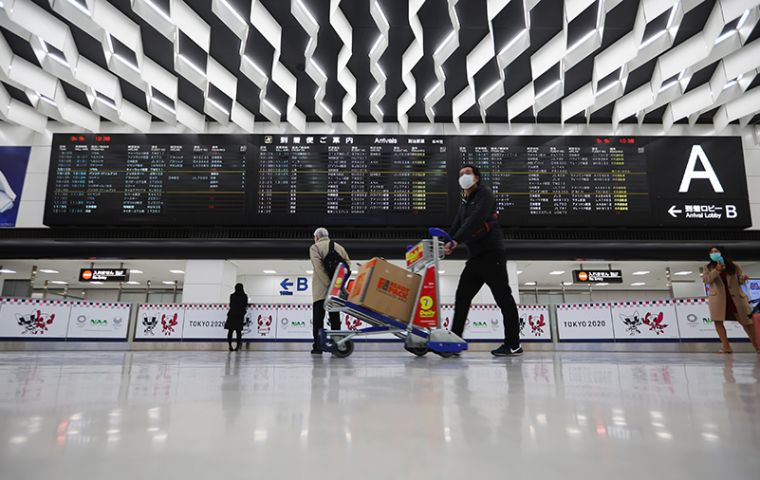MercoPress. South Atlantic News Agency
International tourist arrivals could plunge 60/80% in 2020, the worst since 1950, WTO forecasts
 Tourist arrivals fell by 22% in the first three months of the year, and by 57% in March alone, with Asia and Europe suffering the biggest declines
Tourist arrivals fell by 22% in the first three months of the year, and by 57% in March alone, with Asia and Europe suffering the biggest declines The number of international tourist arrivals could plunge by 60 to 80% in 2020 owing to the coronavirus, the World Tourism Organisation, WTO, said on Thursday, revising its previous forecast sharply lower.
Widespread travel restrictions and the closure of airports and national borders to curb the spread of the virus had plunged international tourism into its worst crisis since records began in 1950, the UN body said in a statement.
Tourist arrivals fell by 22% in the first three months of the year, and by 57% in March alone, with Asia and Europe suffering the biggest declines, according to the Madrid-based organisation.
“The world is facing an unprecedented health and economic crisis. Tourism has been hit hard, with millions of jobs at risk in one of the most labour-intensive sectors of the economy,” the body's secretary general, Zurab Pololikashvili, said.
Airlines have suffered the most since the outbreak began in China in late 2019 with most flights grounded, but hotel groups, cruise operators and tour operators are also reeling.
The UN body had forecast at the beginning of the year that international tourism would grow by 3.0-4.0 per cent in 2020 but then revised its forecast at the end of March, predicting a 20-30 per cent decline.
It now said the full extent of the fall in international tourism will depend on the duration of travel restrictions and shutdown of borders. Under a best-case scenario, with travel restrictions starting to ease in early July, international tourist arrivals could fall by just 58%.
If borders and travel restrictions are only lifted in early December the fall would be more on the order of 78%. If the restrictions are lifted in early September the UN body predicts a fall of 70%.
Under these scenarios, the drop in international travel could lead to a loss of US$910 billion to US$1.2 trillion in export revenues from tourism, and of 100 to 120 million direct tourism jobs.
While international tourism has taken a hit from the outbreak of disease in the past, the new coronavirus is unprecedented in its geographic spread.
By comparison, international tourism arrivals fell by just 0.4 per cent in 2003 after the outbreak of Severe Acute Respiratory Syndrome (Sars) which killed 774 people worldwide.
The UN body said most experts believe there will be signs of recovery by the final quarter of 2020 but mostly in 2021, with Asia and the Pacific expected to rebound first.
Domestic demand is expected to recover faster than international demand, it added.
“Based on previous crises, leisure travel is expected to recover quicker, particularly travel for visiting friends and relatives, than business travel,” it added. Companies have restricted employees' travel while major trade shows have been axed as a result of the pandemic.
Travel experts were more optimistic in Africa and the Middle East, with most predicting a recovery still in 2020. Those in the Americas were the most pessimistic, with half seeing a rebound only next year.
International tourism arrivals rose by 4.0 per cent in 2019 to 1.5 billion, with France the world's most visited country, followed by Spain and the United States.
The last time international tourist arrivals posted an annual decline was 2009 when the global economic crisis led to a 4% drop. The tourism industry accounts for about 10% of the world's gross domestic product (GDP) and job.




Top Comments
Disclaimer & comment rulesCommenting for this story is now closed.
If you have a Facebook account, become a fan and comment on our Facebook Page!